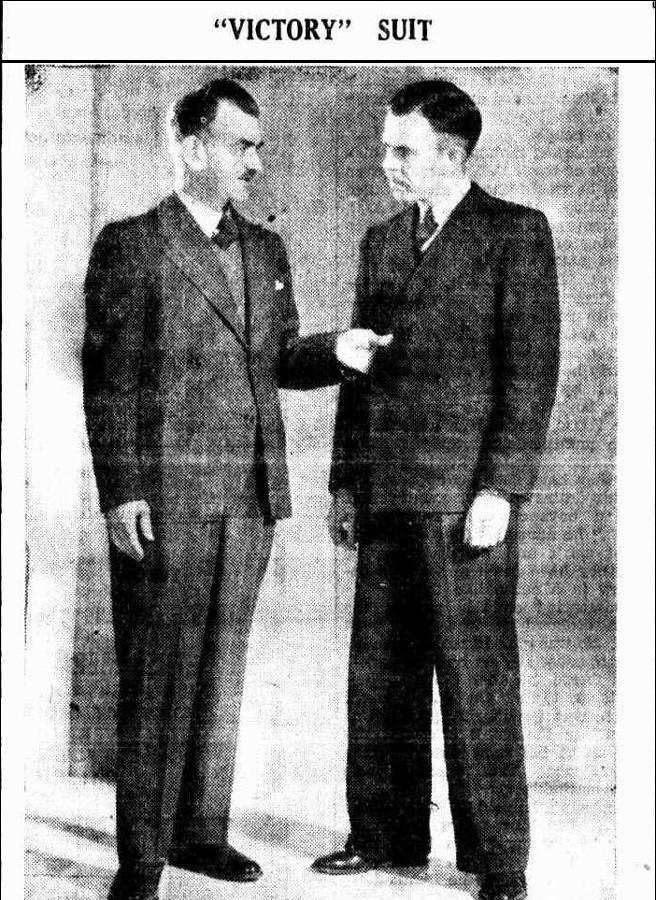In July 1942, John Dedman, Minister for War Organisation of Industry, appeared at his Sydney office in Australia’s first ‘Victory Suit’. Cloth and clothing shortages had become a serious wartime reality, and clothes rationing using a coupon system had been introduced the month before.

Mr Dedman was filmed, somewhat stiffly, modelling his Victory Suit in a short black and white film presented by the War Organisation of Industry (a digitised version of this film can be viewed on the Australian War Memorial’s website). While Mr Dedman’s suit looked ‘just like any other’ there were, in fact, striking differences. Pointing to his suit, Dedman listed where fabric could be saved:
No vest. No trouser turn ups. No buttons on sleeves. That may seem a trivial change, but each of the old-fashioned cuff button holes uses up one extra yard of thread. That means a saving of eight yards on every suit. And no more double-breasted suits will be made.
This was civilian austerity dressing that stripped non-essentials from men’s clothing so that much-needed materials and labour could be directed into the war effort. Style restrictions extended to men’s overcoats, sports jackets, trousers and knitted outwear; women’s and children’s clothing was also ‘streamlined for victory’.
How did the men of Australia respond? Initially, with concern. Removing the waistcoat, in effect reducing the commonly-worn three-piece suit to two pieces, was an unwelcome development. Would men – particularly those in southern states – have a buy a pull-over for warmth, and thereby use their coupons for additional garments, they wondered? And where would they hang their watch-chains? Tailors weighed in to the debate, explaining that removing waistcoats would save little fabric as many bolts of material had already been cut to ‘suit lengths’: the required amount of fabric needed to make a three-piece suit.
Newspapers reported with relish when Mr Dedman appeared in September 1942 wearing a waistcoat – seemingly against his own regulations – although he quickly pointed out that it was from another, older suit and not newly made.
Following months of protest, waistcoats were added to the Victory Suit in December – though the Government maintained this was the result of better stocks of material rather than admitting to public pressure.
References
Commonwealth of Australia, ‘National Security (General) Regulation: Control of Clothing (Male Outerwear) Order, No. 209’, Commonwealth of Australia Gazette, 31 July 1942.
‘“Deadman Wore Waistcoat With Victory Suit!”’, Tweed Daily, 11 September 1942, 1.
The National Films Council of The Department of Information presents A War Organisation of Industry Production, John Dedman in ‘Victory Suit’, 35mm black and white film, directed by Ralph Smart, commentary by Harry Dearth, Australian War Memorial Collection, F01641: https://www.awm.gov.au/collection/C189026.
‘Plea for Waistcoats: Making up of Suit Lengths Already in Stock’, Mercury, 31 July 1942, 5.
‘“Victory Suit”: Some Tailors Critical’, Sydney Morning Herald, 28 July 1942, 4.
‘Victory Suit With Old Waistcoat’, Barrier Miner, 14 September 1942, 3.
‘Waistcoat Ban Opposed’, Evening Advocate, 7 August 1942, 1.
